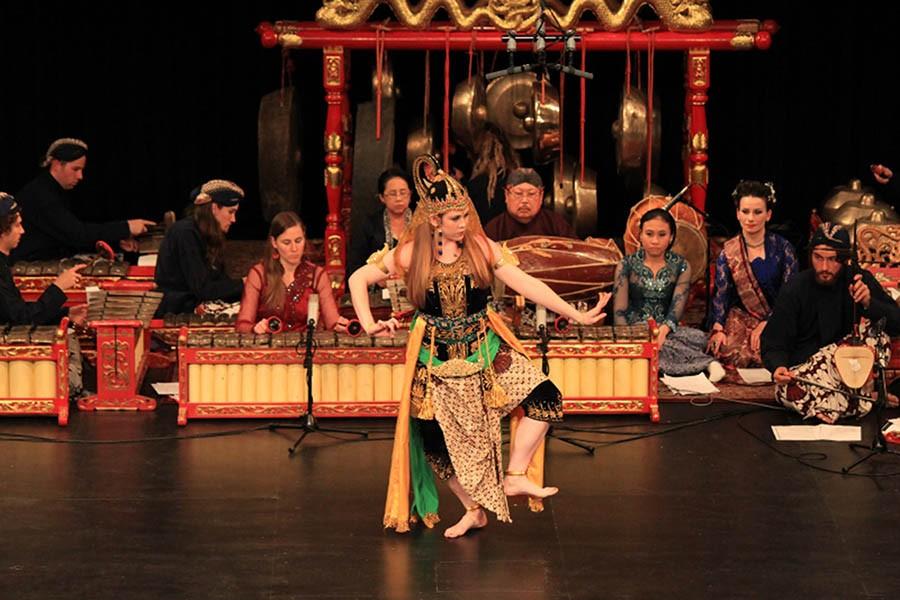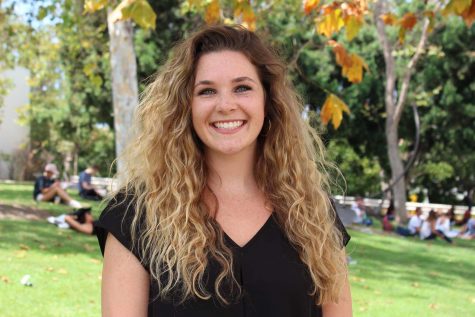The School of Music and Dance at San Diego State has a variety of programs and performing groups, including groups classified as world music. There are three ensembles that are part of the world music or ethnomusicology program: the Latin American ensemble, the Mariachi ensemble and the Javanese ensemble.
“Java is one of the islands in the archipelago of over 17,000 islands in Indonesia,” said Laurel Grinnell, the Javanese Gamelan program’s assistant director. “‘Gamelan’ translates as orchestra and refers to a collection of instruments that share a heritage, but the number of instruments and types of instruments may vary.”
The Javanese Gamelan performance ensemble is offered through the music department’s ethnomusicology program and is part of an ornate history.
The program was first introduced to the university by Robert Brown in the ’70s. The Gamelan’s current instructor is Pak Djoko Walujo, who has been teaching at SDSU since 1994.
“We’re really thankful to have the Gamelan because it’s one of the programs we never want to let go of because the instruments are so special,” Grinnell said. “Once you lose a master teacher like Pak Djoko, it’s hard to find a person who specializes in such a niche style of music.”
Grinnell spent more than 10 years as a professional musician after receiving a bachelor’s degree in jazz studies and a master’s degree in ethnomusicology. She believes the ensemble adds diversity to the SDSU School of Music and Dance.
“Diversity is very important,” she said. “If programs become so diluted, music becomes this weird monotony.”
Grinnell serves as a liaison and translator between Pak Djoko and the students, as there can be a language barrier during rehearsals. Aside from speaking Bahasa Indonesian, she also plays almost all of the instruments in the ensemble and helps students learn specific instruments.
“Each instrument has a distinct sound and specific role,” she said. “Students have to feel confident playing their instrument but also have ears big enough to hear what’s going on around them because the complete sound is the most important.”
The instruments are completely different from what’s commonly found in orchestras. Each instrument is made with painted bronze and hand-carved frames decorated to correlate with parts of Javanese culture. All the instruments come together to create a unique sound, uncommon with traditional orchestras.
“For me (Gamelan) is about the learning and seeing how it all comes together in the end,” global composition senior Dorothy Guthrie said. “It’s a meditative and unique style of music that is always sacred.”
The class is open to all music and non-music majors and is available for both undergrad and graduate students.
The class is small, with ideally 10 to 12 students each semester.
The music’s notation is cypher-notation, which Grinnell explained as “paint-by-number,” making it easy for students to join without knowing how to read music or even being familiar with music.
“This is probably the most different thing you can do on campus,” recording technology and audio design junior Joshua Jackson said.
“Each semester is a hit or miss with students,” Grinnell said. “Although, many students return because they want to have an opportunity to try the other instruments. The culture of the class really sucks you in. We really love it when students from other departments join because it creates a really cool dynamic.”











